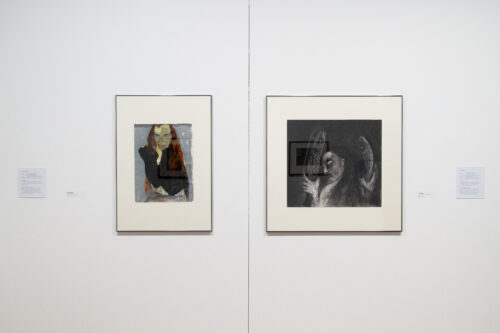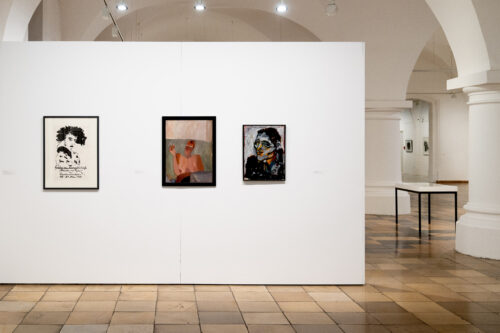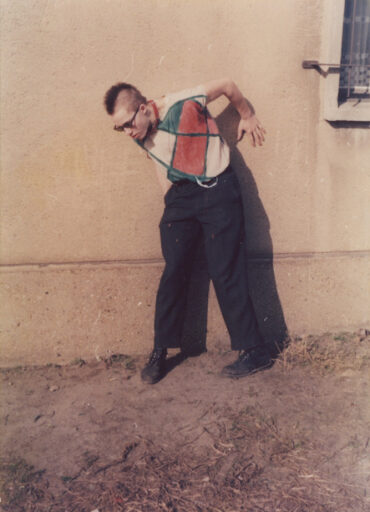
Sezessionistinnen aus Dresden Ein Anfang voller Hoffnung

Angela Hampel, Angela und Angelus V, 1987, Goldbronze, Kohle, Latex, Öl auf Papier © VG Bild-Kunst, Bonn 2024, Foto: Ludwig Rauch
Kerstin Franke-Gneuß, Angela Hampel, Christiane Just, Gerda Lepke, Thea Richter, Gudrun Trendafilov
1989 war eine unsichere Zeit voller euphorischer Aufbruchstimmung. In dieser aufregenden Phase versammelten sich Künstlerinnen in Dresden zu tollkühnem Widerstand. Trotzig forderten sie die Gleichberechtigung der Frau im Kunst- und Gesellschaftsleben. In der DDR hatte man Feminismus kaum gekannt. Nun also Frauenpower pur!
Im Dezember 1989 gründeten 23 Künstlerinnen und Kunstwissenschaftlerinnen die „Dresdner Sezession 89“. An die Kunsttradition der Dresdner Sezessionen schlossen sich die Gründerinnen dem Namen nach bewusst an. Die Künstlerinnengruppe setzte sich zum Ziel, die individuellen künstlerischen Entwicklungswege der Sezessionistinnen zu stärken, damit diese ihr weibliches schöpferisches Potenzial entfalten können. Von nun an wurden in eigenen Galerieräumen Ausstellungen von Künstlerinnen kuratiert, es fanden Konzerte, Lesungen und Auktionen statt, Grafikmappen wurden herausgegeben und natürlich rauschende Kunstfeste gefeiert. Seit nunmehr 35 Jahren wird diese Arbeit in der Galerie Drei bis heute fortgeführt. Jüngere Generationen sind längst am Zug.
Die Künstlerinnen waren damals in ihren 30ern und 40ern. Obwohl einige die Sezession 89 längst verlassen haben und seither auf Solopfaden unterwegs sind, ist es interessant ihrer künstlerischen Schaffenskraft bis in die Gegenwart zu folgen.
…
The group exhibition focuses on some founding members of the “Dresden Secession 89” and follows their artistic development from the secessionist beginnings to the present day.
1989 was an uncertain time full of euphoric optimism. During this exciting phase, women artists gathered in Dresden for daring resistance. They defiantly demanded equal rights for women in art and social life. Feminism was hardly known in the GDR. Now pure female power was in demand!
In December 1989, 23 artists and art historians founded the “Dresden Secession 89”. The founders consciously followed the artistic tradition of the Dresden Secessions in name. The group of artists set itself the goal of strengthening the individual artistic development paths of the secessionists so that they can develop their female creative potential. From now on, exhibitions by female artists were curated in separate gallery spaces, concerts, readings and auctions took place, graphic portfolios were published and, of course, lavish art festivals were celebrated. This work has been continued in Galerie Drei for 35 years now. Younger generations have long been in charge.
The artists were in their 30s and 40s at the time. Although some have long since left the Secession 89 and have been on solo paths since then, it is interesting to follow their artistic creativity up to the present day.



















